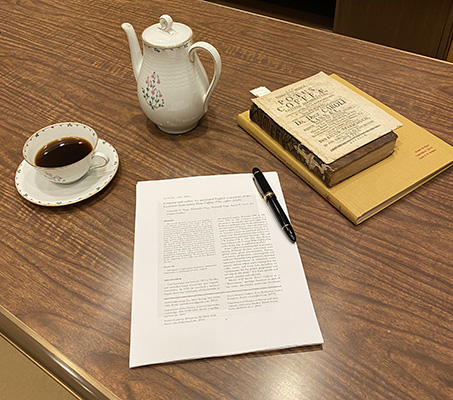News
22(1) Huntia published
16 December 2025
In this issue of Huntia we explore the foundation of academia, the relationship between graduate students and their major professor. Using Linnaeus, our starting point for most things botanical, and his students, we see the beginning of that relationship that has evolved into what we have today. In "Linnaeus and coffee: An annotated English translation of the Linnaean dissertation Potus Coffeae (The coffee drink)" Fernando E. Vega, Alexander Vega, Maxwell Vega, Aaron P. Davis and Hanna Hodacs offer fresh insights. Grab a cup of coffee and enjoy this stimulating read. Using a Linnaean china cup is optional but encouraged.
Our Linnaean china comes from Rachel Hunt's desire for a tea set patterned after one used by Linnaeus. Reproducing a replica set for her new library proved impractical. However, A-B Rörstrands Utställning of Stockholm, Sweden, sold a tea set designed for the Linné jubilee by Louise Adelborg. It bears a realistic reproduction of Linnaea borealis, the plant named by Linnaeus. Our original set included 144 teacups with saucers, 216 plates in two sizes and 12 each of tea pots, sugar bowls, cream pitchers and hot water pots. In 1967 the coffee cups and pots were added. Whether you have the original or a homage, lift a cup in honor of Linnaeus, his students and graduate students everywhere who continue to toil in the service of botany.
If you're ready to take us on a new journey in the pages of our journal of botanical history, check out the topics and submission guidelines available on the Huntia page.
About the Hunt Institute for Botanical Documentation
The Hunt Institute for Botanical Documentation, a research division of Carnegie Mellon University, specializes in the history of botany and all aspects of plant science and serves the international scientific community through research and documentation. To this end, the Institute acquires and maintains authoritative collections of books, plant images, manuscripts, portraits and data files, and provides publications and other modes of information service. The Institute meets the reference needs of botanists, biologists, historians, conservationists, librarians, bibliographers and the public at large, especially those concerned with any aspect of the North American flora.
Media Contact:
Scarlett T. Townsend
412-268-7304
st19@andrew.cmu.edu

